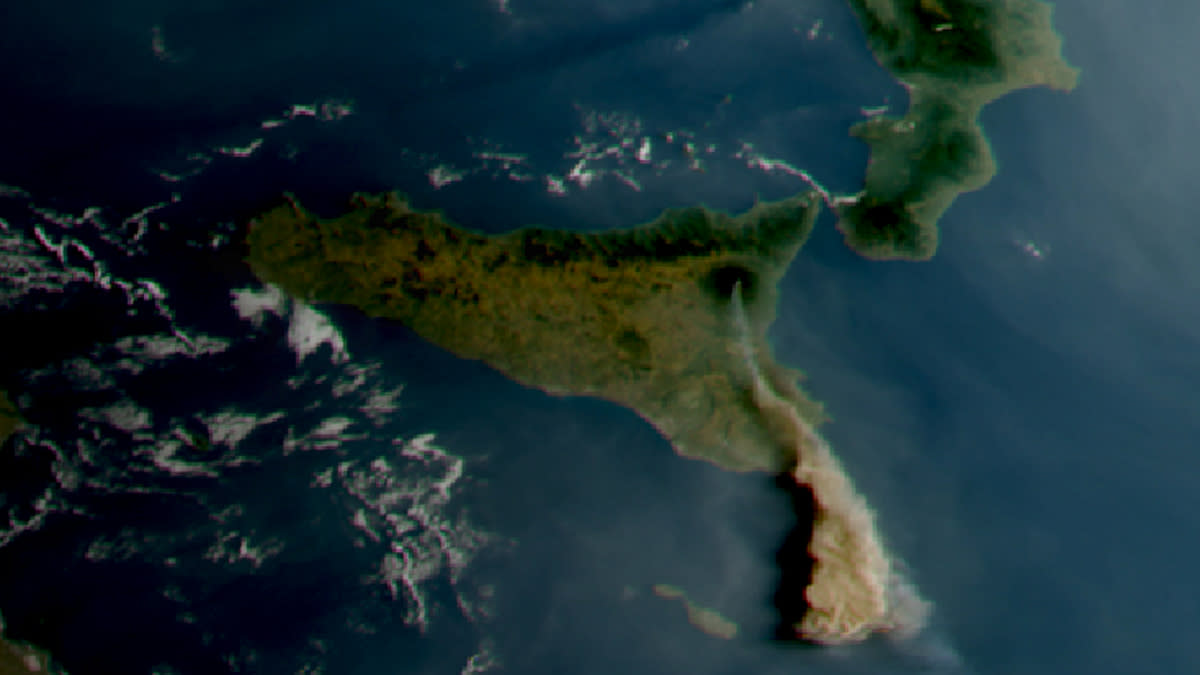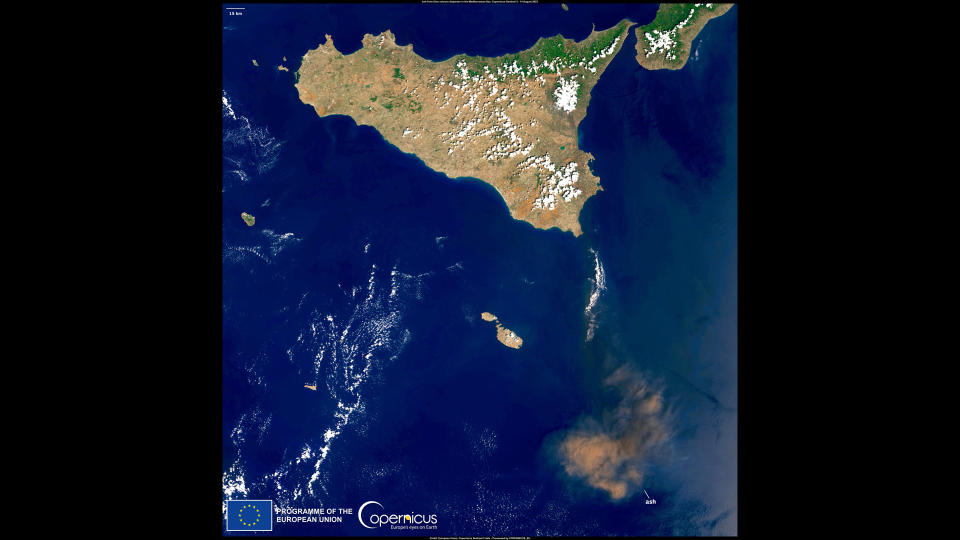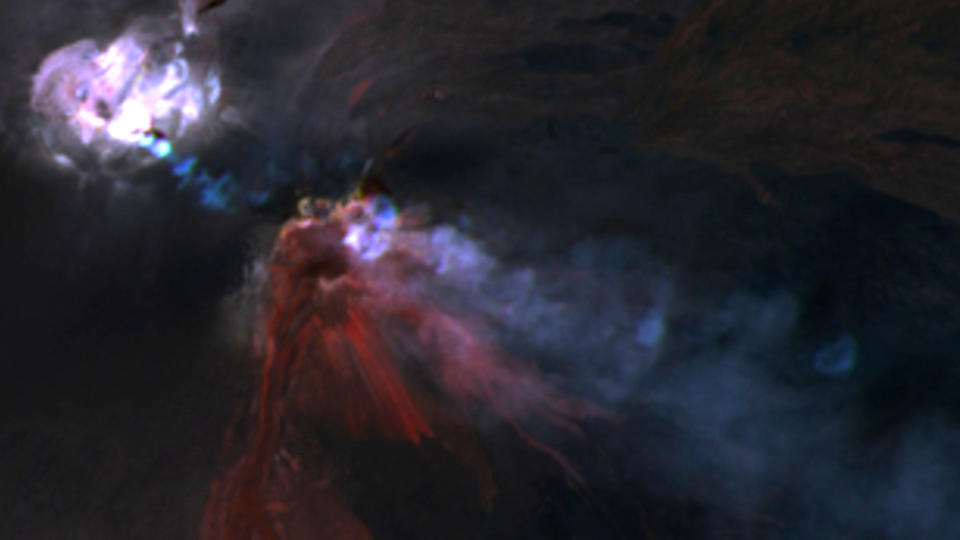Satellites show Mount Etna volcano erupt after weeks of puffing out smoke rings (photos)

Europe's most active volcano, Italy's Mount Etna, erupted on Sunday (Aug. 13) after weeks of puffing out odd smoke rings. Here is how it looked from space.
Europe's weather satellite MTGI-1 captured a thick plume of smoke rising from the crater of the 11,000-foot-high (3,357 meters) volcano located on the Mediterranean island of Sicily early on Monday (Aug. 14) morning.
The image, taken from MTGI-1's perch in geostationary orbit 22,000 miles (36,000 kilometers) above Earth, shows the dark, sulfur-rich plume spreading southward from Sicily across the Mediterranean Sea toward the coast of Libya.
Related: Mount Etna's fiery eruptions seen from space (satellite photos)
The eruption, which also produced spectacular geysers of lava, posed no risk to residents of Sicily, but forced local authorities to close a local airport due to high concentrations of abrasive volcanic ash in the air. Volcanic ash, which contains particles of molten rock, could damage aircraft engines and is considered a major risk for aviation.

The eruption came after weeks of mild activity, during which the volcano regularly spewed large rings of smoke. Volcanologists think that this rare phenomenon occurs when a bubble of gas bursts through the volcanic vent, the opening at the top of a volcano through which magma and gases reach the surface. Numerous volcano experts and random observers posted images of those rings on X, formerly known as Twitter, over the past weeks.

Related stories:
— Mount Etna is erupting and astronauts are watching it from space
— Mount Etna is 100 feet taller than it was 6 months ago
— Mount Etna volcano erupts for 50th time of 2021 in this satellite photo
The rings were so large that they were distinguishable even in images taken by satellites from space. An Earth-observation researcher known only under his X moniker Kosmi, found those rings in snapshots taken by Europe's Earth-observation satellite Sentinel-2.
Italy's Civil Protection Department triggered a yellow, moderate, warning for Etna's activity. Despite being known for its frequent outbursts, the volcano isn't usually dangerous according to the Department, as its lava rivers flow slowly and require a lot of time to reach surrounding settlements. The volcanic ash, however, could cause a lengthy disruption to air travel and substantially worsen air quality in the Mediterranean region.

